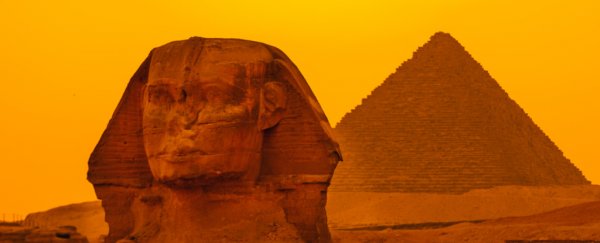It's called the Meghalayan: an epic stretch of time that spans from around 4,200 years ago right up until the time you finished reading this sentence.
Officially ratified by the International Commission on Stratigraphy in July, this newly recognised period is now considered a distinct age in the geologic time scale – but ever since it was announced, the Meghalayan has been mired in a testy, heated controversy.
In the bigger picture, what we're living in now is the called the Holocene epoch – which has lasted for roughly 11,700 years, since the end of the last Ice Age.
In 2012, a working group of scientists proposed formally dividing the Holocene into three ages based on distinct changes in the geological record.
The uppermost and most recent of these is the Meghalayan, preceded by the two other newly ratified ages: the Northgrippian, and the Greenlandian before it.
According to those behind the newly officialised changes, the Late Holocene Meghalayan Age commenced when the world experienced an abrupt and critical mega-drought some 4,200 years ago – an intense dry spell that lasted for 200 years.
The International Commission on Stratigraphy (ICS) suggests the environmental harshness of this event led to mass migrations and the collapse of civilisations in Egypt, Greece, Syria, and elsewhere – but not everybody agrees with this catastrophic marker.
In a new paper, archaeologist Guy Middleton argues there is scant archaeological evidence for such a widespread collapse.
"The environmental and climatic determinism behind the megadroughtcollapse narrative fails to account for specific historical circumstances, the power of human agency to drive substantial change, and the translation of environmental factors into cultural and sociopolitical contexts," Middleton writes.
"Current evidence, therefore, casts doubt on the utility of 2200 BCE as a meaningful beginning to a new age in human terms, whether there was a megadrought or not."
In Middleton's view, the range of societal changes in process at 2200 BCE were too complex and varied to be considered a meaningful "threshold date" – an error he attributes to a lack of adequate communication and collaboration between researchers across geology, archaeology, and history.
"The idea that the collapse of a society can be put down to one simple reason ignores people's agency," Middleton told National Geographic.
"'Collapse' is a bit of a weasel term. Things aren't usually as simple as climate change equals collapse."
For the researchers behind the Meghalayan and the ICS's new formal divisions of the Holocene, Middleton's ideas have not been received kindly.
"This is a totally misleading piece of writing, which displays a lamentable grasp of the facts," quaternary scientist Michael Walker from the University of Wales – who led the 2012 Meghalayan working group – told The Atlantic.
"I do not see a single accurate claim," Walker's co-author Harvey Weiss of Yale University added, characterising Middleton as a "pop-archaeology writer, failed archaeology PhD, and English-as-a-second-language instructor in Japan… Why does Science publish this rubbish?"
While there's clearly no love lost between Middleton and the Meghalayan's backers, it's also clear that Middleton isn't the only researcher unconvinced of the Meghalayan's credentials.
As soon as the ICS announced the three new ages in July, there was criticism from other researchers, who claimed the 'unnecessary' sub-divisions of the Holocene were a distraction that hindered recognition of the Anthropocene: the proposed geological epoch marked by humanity's lasting impact on the planet.
According to the critics, acceptance of the Anthropocene – which should have now ended the Holocene, some claim – has been complicated by the Meghalayan and its newly recognised counterparts.
"We have lots of new definitions that perhaps now contradict the Anthropocene Working Group and go against what most scientists perceive to be the most important change on Earth in the last 10,000 years," geographer Mark Maslin from University College London told the BBC in July.
Others were even less charitable.
"What the f*** is the Meghalayan?" geologist Ben van der Pluijm from the University of Michigan asked The Atlantic.
"I was stunned by this whole thing. I think they've trivialised the Anthropocene by doing this."
It might seem like an obscure scientific feud, but proponents of the Anthropocene say there's more at stake here.
From one perspective, the longer we continue to define geological ages as chapters entirely outside our control, the longer we're in effect refusing to acknowledge our ongoing and unprecedented impact on the world around us.
"Widespread recognition that human actions are driving far-reaching changes to the life-supporting infrastructure of the Earth has profound philosophical, social, economic and political implications," Maslin and fellow UCL researcher Simon Lewis wrote in The Conversation in August.
"Surely that is important enough to compel scientists to work together to define exactly when humanity became the new geological superpower and help us all better understand the new epoch we live in."
The new paper is published in Science.
